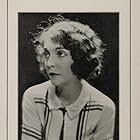IMDb RATING
7.0/10
2.5K
YOUR RATING
A multimillionaire decides to boycott "filthy" forms of entertainment such as Broadway shows.A multimillionaire decides to boycott "filthy" forms of entertainment such as Broadway shows.A multimillionaire decides to boycott "filthy" forms of entertainment such as Broadway shows.
- Awards
- 1 win
Avis Adair
- Chorus Girl
- (uncredited)
Marvelle Andre
- Chorus Girl
- (uncredited)
Loretta Andrews
- Chorus Girl
- (uncredited)
Cecil Arden
- Chorus Girl
- (uncredited)
Storyline
Did you know
- TriviaIn the "Dames" number, Dick Powell as a Broadway producer doesn't want to see composer George Gershwin, but when asked by his secretary about seeing Miss Dubin, Miss Warren and Miss Kelly, he lets them enter his office. This is an inside joke, referring to Al Dubin and Harry Warren, who wrote the music for this film, and Orry-Kelly, who was the costume designer.
- GoofsWhile Joan Blondell is singing "The Girl at the Ironing Board", a stage hand is seen in the background hanging a clothesline.
- ConnectionsEdited into Musical Memories (1946)
- SoundtracksDames
(1934) (uncredited)
Music by Harry Warren
Lyrics by Al Dubin
Danced by Ruby Keeler at rehearsal
Sung by Dick Powell and chorus in the show
Played as background music often
Featured review
No one who lived through the Great Depression could possibly take seriously negative comments on the quality and content this film written by youngsters with no sense of its historical context. To lament its silliness or find fault with what seem now to be crude mechanical cinematographic devices just begs the question.
This movie could not be recreated in the twenty-first century even in the smallest part. In the first place, musicals are now passé. The drag parody of the title number "Dames" in 1988's film Torch Song Trilogy is proof of that. Moreover, its stock characters (Hugh Herbert, Guy Kibbee, Zasu Pitts) were simply reprising common comedic roles of the day, completely unsuited to the harsher and more cynical models now in vogue. And Ruby Keeler's numbers lack totally the athleticism of our contemporary dancers.
What we can appreciate about the movie is how it fits nicely into the Busby Berkeley oeuvre. After his huge successes of 1933, this example is a fitting continuation to his development as a moviemaker. The catastrophic effects of the Great Depression like mass unemployment, hunger, wholesale uprooting of communities, and abject poverty affecting the lives of millions of ordinary Americans could be forgotten for a few pennies spent in the local movie house. It played to the needs of its time.
Interestingly, the packaging of female pulchritude in the film also fits with that time. What today seems borderline pornographic or insulting to women was accepted without much fuss in 1934. Indeed, any student of Freud could have a field day deconstructing some of the Berkeley images.
As to the music, it is simply classic. Dick Powell's phrasing is a model of tenor sensibility in an age of Big Band baritones. One has to accept that continuity or theatrical presentation is not a factor. Each number stands or falls entirely on its own as seen through the lens of the camera. As an early prototype of the Hollywood musical, Dames was and is a smash hit.
This movie could not be recreated in the twenty-first century even in the smallest part. In the first place, musicals are now passé. The drag parody of the title number "Dames" in 1988's film Torch Song Trilogy is proof of that. Moreover, its stock characters (Hugh Herbert, Guy Kibbee, Zasu Pitts) were simply reprising common comedic roles of the day, completely unsuited to the harsher and more cynical models now in vogue. And Ruby Keeler's numbers lack totally the athleticism of our contemporary dancers.
What we can appreciate about the movie is how it fits nicely into the Busby Berkeley oeuvre. After his huge successes of 1933, this example is a fitting continuation to his development as a moviemaker. The catastrophic effects of the Great Depression like mass unemployment, hunger, wholesale uprooting of communities, and abject poverty affecting the lives of millions of ordinary Americans could be forgotten for a few pennies spent in the local movie house. It played to the needs of its time.
Interestingly, the packaging of female pulchritude in the film also fits with that time. What today seems borderline pornographic or insulting to women was accepted without much fuss in 1934. Indeed, any student of Freud could have a field day deconstructing some of the Berkeley images.
As to the music, it is simply classic. Dick Powell's phrasing is a model of tenor sensibility in an age of Big Band baritones. One has to accept that continuity or theatrical presentation is not a factor. Each number stands or falls entirely on its own as seen through the lens of the camera. As an early prototype of the Hollywood musical, Dames was and is a smash hit.
- How long is Dames?Powered by Alexa
Details
Box office
- Budget
- $779,000 (estimated)
- Runtime1 hour 31 minutes
- Color
- Sound mix
- Aspect ratio
- 1.37 : 1
Contribute to this page
Suggest an edit or add missing content





































